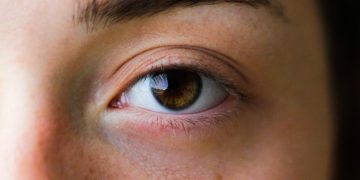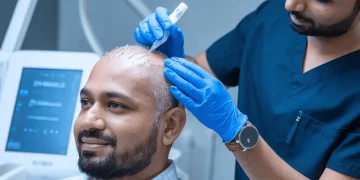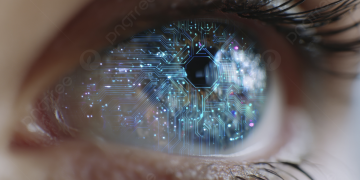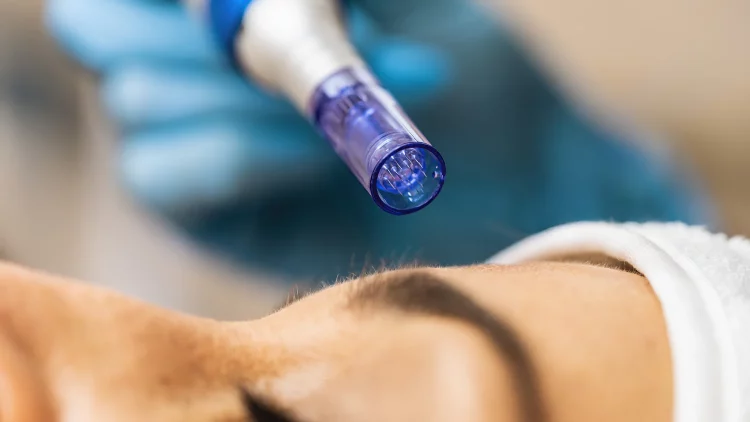The human quest for youthful, radiant skin is as ancient as civilization itself, yet the methods have evolved from mystical potions to sophisticated biomedical technologies. Today, we stand at the intersection of biology and engineering, where the journey of skin rejuvenation has progressed from simple wound-triggering techniques to intelligent, cellular-level interventions. This evolution—from the controlled injury of microneedling to the precision of laser therapy and the groundbreaking potential of nanotechnology—represents a fundamental shift in our approach to aging skin. It’s a move from brute-force stimulation to targeted, intelligent repair. This article traces this remarkable journey, exploring the mechanisms, advancements, and safety paradigms of microneedling, laser therapy, and the nascent field of nanotech-driven dermatology.
Microneedling: The Power of Controlled Injury
The concept behind microneedling is elegantly simple: harness the body’s innate wound-healing cascade to stimulate skin rejuvenation. Also known as collagen induction therapy, it involves creating micro-channels in the skin using fine, sterile needles.
The Mechanism: Fooling the Body into Repair
When the skin is punctured by microneedles, it triggers a complex biological process. The body perceives this as a minor injury and rushes to repair it. This process is orchestrated by platelets and various growth factors, including:
- Platelet-Derived Growth Factor (PDGF): Promotes cell replication and attracts other cells to the site.
- Transforming Growth Factor-beta (TGF-β): A key driver of collagen and elastin production.
- Fibroblast Growth Factor (FGF): Stimulates the growth of fibroblasts, the cells responsible for producing collagen.
This cascade results in the deposition of new, organized collagen and elastin fibers, leading to thicker, firmer, and more youthful-looking skin. The “wound” is so microscopic that it doesn’t cause significant scarring, but it is significant enough to kickstart a powerful regenerative response.
The Technological Evolution: From Dermarollers to Robotic Pens
The tools for microneedling have undergone significant refinement:
- Dermarollers: The first-generation tools, featuring a roller with hundreds of needles. While effective, their rolling motion could create uneven, angled channels and posed a higher risk of tearing the skin.
- Microneedling Pens: A major advancement, these electrically-powered devices feature a reciprocating cartridge of needles that move vertically in and out of the skin at high speed. This allows for more precise control over depth, speed, and pressure, creating uniform channels and yielding more consistent results with less trauma.
- Fractional Radiofrequency (RF) Microneedling: This represents a hybrid technology. Microneedles deliver bipolar RF energy deep into the dermis. The thermal energy causes controlled thermal injury, further stimulating collagen contraction and neocollagenesis, while the needles themselves create physical channels. This combination is particularly effective for more significant skin laxity and scarring.
The primary applications for microneedling include improving the appearance of acne scars, fine lines, wrinkles, and overall skin texture and tone.
Laser Therapy: The Precision of Light
If microneedling is a general call to arms for the skin’s healing forces, laser therapy is a precision-guided strike. Lasers (Light Amplification by Stimulated Emission of Radiation) work on the principle of selective photothermolysis—using a specific wavelength of light that is preferentially absorbed by a target in the skin (called a chromophore), while leaving the surrounding tissue unharmed.
Ablative vs. Non-Ablative: Resurfacing the Skin’s Landscape
Laser treatments are broadly categorized by their effect on the epidermis, the skin’s outermost layer.
- Ablative Lasers (CO2, Erbium:YAG): These powerful lasers vaporize the entire epidermis and a portion of the dermis. By completely removing the damaged surface layer, they force the body to generate entirely new skin. The results for deep wrinkles and significant sun damage can be dramatic, but this comes with a lengthy downtime (several weeks) and a higher risk of side effects like scarring and pigmentation changes.
- Non-Ablative Lasers (Nd:YAG, Pulsed Dye): These lasers are designed to bypass the epidermis without damaging it. Their light energy is absorbed by water or hemoglobin in the dermis, creating controlled thermal damage that stimulates collagen remodeling over time. The trade-off is that multiple sessions are needed, and results are more subtle, but there is virtually no downtime.
The Fractional Revolution: Balancing Efficacy and Recovery
The most significant advancement in laser technology was the development of fractional photothermolysis. Instead of treating a continuous area of skin, fractional lasers create a grid of microscopic treatment zones (MTZs), leaving the surrounding skin intact. This “pixilated” injury pattern allows for deep dermal remodeling and dramatic results, but because a significant percentage of the epidermis is unharmed, the healing process is much faster than with traditional ablative lasers. This technology successfully bridged the gap between the efficacy of ablative procedures and the minimal downtime of non-ablative ones, making powerful skin rejuvenation accessible to a wider audience.

Nanotechnology Innovations: The Cellular Frontier
Nanotechnology represents the next paradigm shift, moving from tissue-level stimulation to intracellular intervention. It involves the engineering of materials and devices at the nanometer scale (1-100 nanometers) to interact with biological systems at the molecular level.
Enhanced Transdermal Delivery: Bypassing the Barrier
The outermost layer of the skin, the stratum corneum, is a formidable barrier designed to keep things out. Nanocarriers are engineered to overcome this.
- Liposomes and Niosomes: Spherical vesicles that can encapsulate active ingredients (like vitamins, peptides, or growth factors) and fuse with cell membranes to deliver their payload directly into the cells.
- Solid Lipid Nanoparticles (SLNs) and Nanostructured Lipid Carriers (NLCs): These provide superior stability and controlled release of active compounds, protecting them from degradation and ensuring they reach their target.
- Dendrimers: Highly branched, tree-like polymers that can be precisely engineered to carry multiple therapeutic molecules to specific cellular targets.
This technology allows for the effective delivery of large molecules, like growth factors and DNA enzymes, that would otherwise be unable to penetrate the skin, dramatically increasing the efficacy of topical treatments.
Smart Diagnostics and Targeted Therapy
Beyond delivery, nanotechnology enables a new level of intelligence in skincare.
- Diagnostic Nanosensors: Imagine a cream containing nanoparticles that can detect specific biomarkers of inflammation, oxidative stress, or even early-stage cancerous changes, and change color to alert the user.
- Stimuli-Responsive Release: Nanocarriers can be designed to release their therapeutic payload only in response to a specific trigger, such as the slightly acidic pH of inflamed acne, UV radiation, or an enzyme overexpressed in aging skin. This ensures the right treatment is delivered to the right place at the right time, maximizing effect and minimizing irritation.
The Future: Gene Editing and Cellular Reprogramming
The most futuristic application of nanotech in dermatology involves using nanoparticles as vehicles for genetic material. By delivering small interfering RNA (siRNA) or CRISPR-Cas9 components, it may soon be possible to temporarily “switch off” genes responsible for collagen degradation or “edit” the cellular machinery to promote a more youthful phenotype, offering a potential cure for genetic skin disorders and a powerful new tool for anti-aging.
Safety Considerations
With increasing technological power comes an increased responsibility to ensure safety. Each modality carries its own unique risk profile.
Microneedling Safety: The primary risks are infection, post-inflammatory hyperpigmentation (especially in darker skin tones), and improper technique leading to scarring. The shift from rollers to pens has reduced the risk of tearing, and the use of single-use, sterile needle cartridges is critical for preventing cross-contamination. The recent boom in at-home dermarollers raises significant concerns, as improper sterilization and technique can lead to severe skin damage.
Laser Therapy Safety: Laser safety is paramount. Risks include burns, scarring, permanent hypopigmentation (loss of color) or hyperpigmentation, and eye injury. The key to safety lies in proper patient selection (matching the laser and settings to the individual’s skin type and concern), operator expertise, and rigorous pre- and post-operative care, including strict sun avoidance.
Nanotechnology Safety: The Unknown Frontier: The long-term safety of nanoparticles is the subject of intense ongoing research. The primary concerns are:
- Toxicity: The small size of nanoparticles may allow them to penetrate deeper into the skin and potentially enter the bloodstream, with unknown systemic effects.
- Persistence: How do these materials break down in the body? Could they accumulate in organs?
- Environmental Impact: The effect of nanoparticles washing off into the ecosystem is not fully understood.
Robust regulatory frameworks, like those from the FDA and EMA, are evolving to require thorough toxicological profiling before nano-enabled cosmetics and drugs can reach the market.
Conclusion
The evolution of skin rejuvenation is a story of increasing precision, intelligence, and personalization. We have moved from the generalized stimulus of microneedling, which rallies the body’s own healing resources, to the targeted precision of lasers, which can address specific chromophores with minimal collateral damage. Now, nanotechnology promises a future where treatments are not just applied to the skin, but are designed to communicate with it at a cellular and molecular level, diagnosing problems and delivering therapies with unparalleled accuracy.
This journey reflects a broader trend in medicine: a shift from treating symptoms to understanding and manipulating underlying biological processes. As we stand at the precipice of this new era, the focus must remain on harnessing these powerful technologies responsibly, balancing the relentless pursuit of innovation with a steadfast commitment to safety and ethical consideration. The future of youthful skin may not lie in erasing the passage of time, but in partnering with our biology to age with health, grace, and vitality.













































